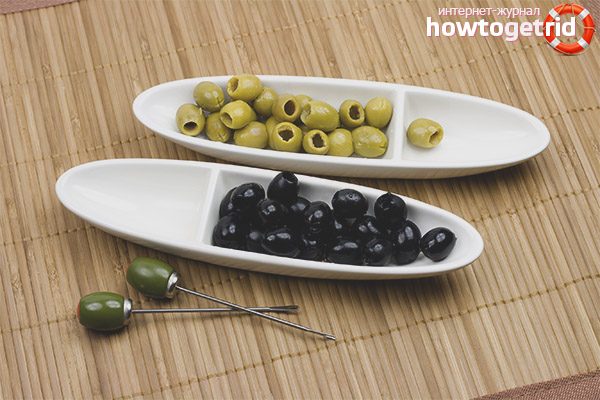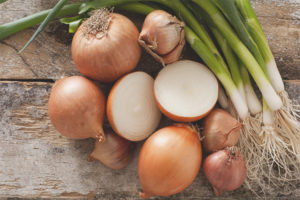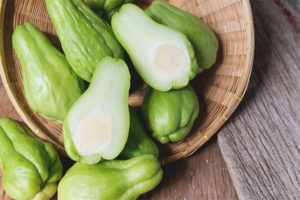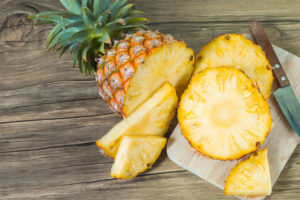The content of the article
Miracles of the food industry concern not only bread, which does not mold, and milk, which does not turn into yogurt even after a week. He also touched on such a traditional product as olives. If science claims that they and olives are the fruits of one tree, then it is not clear why there are differences in taste and color. It turns out that you need to look not at the tree, but at the vat with additives, in which both species have visited.
How olives grow
The olive tree was known before BC. It had practical and symbolic meaning. For the Mediterranean countries, the olive branch was a synonym for peace and harmony. She was depicted with leaves and fruits, in the drawings they are green. Olive groves grow in Greece, India, Pakistan, Turkmenistan in southern Russia, in Azerbaijan.
Depending on the species, the plant is a tall shrub or tree with a grayish bark. It grows very slowly and the first harvest is expected only after 10 - 15 years. Fruiting 1 time in 2 years, about 25-40 kg are collected from one tree. fruits. They are not suitable for food, to bring them into an edible form, a long preparation is used, using natural technologies, taking from 3 to 12 months. More than 100 varieties of olive trees were bred. For canning, unripe, green olives are used, which tolerate transportation well and do not lose their presentation. Oil needs ripened fruits, which become almost twice as large and gradually darken under the hot southern sun.
For the name of the plant, the designations "European olive" and "cultivated olive" are equally used. She does not discard the leaves, but gradually changes to new ones within 2-3 years. The trunk of the tree is coarse, twisted, the crown branches strongly, giving many thin branches. Very resistant to adverse weather conditions. The regeneration is so powerful that the plant continues to live after a strong fire or damage by lightning. Life expectancy is about 600 years.
According to legend, a tree appeared as a gift from the goddess Athena to people. Olive groves were sacred and surrounded the temples of the gods of the Greek pantheon.
Composition and benefits
The main use of the fruit is the manufacture of olive oil. The most useful is obtained with cold-pressed technology. It is used in food, used for medicinal and cosmetic purposes. The composition of olives includes:
- Omega acids 3, 6, 9;
- vitamins A, E, K, D;
- polyphenols;
- carotenoids;
- accusations;
- tocopherols;
- sterols;
- chromium.
Olive oil contains a record amount of omega acids, 3.5 times higher than other vegetable oils.
Important: useful compounds are destroyed by heating, therefore, for therapeutic and prophylactic purposes only the cold-pressed product is used, without heat treatment.
The unique properties of olives are less pronounced, however, their use reduces the risk of cancer cell growth, cleanses blood vessels and dissolves cholesterol plaques, stabilizes blood pressure and supports heart function.
Olive oil is indicated for menopause in women, it can reduce sweating, reduce the frequency of hot flashes, relieve muscle cramps, pain, and normalize mood.
You should know: taking 1 teaspoon of oil on an empty stomach stabilizes the digestive tract, eliminate constipation and congestion in the intestine, stimulates peristalsis.
The effect of olives and olives is the same, since it is one fruit of a different degree of ripeness. Therefore, you can safely feast on what you like more and still receive prophylaxis:
- headaches;
- retinal dystrophy, the development of glaucoma and cataracts;
- asthma
- skin diseases.
When olives and olives are introduced into the diet, complexion improves significantly, skin elasticity increases, and the structure of hair and nails becomes denser. The great healer of antiquity Avicenna considered olives and oil from them a panacea for most diseases.
Who is not recommended to consume olives and olives
Where do olives come from black
In nature, such a shade does not exist, usually even overripe fruits give a little purple and do not have a uniform color. To accelerate the processing of crops, special food additives and technologies were applied. Fruits, which have to acquire a noble black color, are placed in cans, where compressed oxygen is supplied for 10-15 days, it activates oxidative processes and the flesh becomes black up to the bone. After this, the resulting product is placed in brine and sealed.
Whatever color is chosen on the shelf of the store, as a result, the fruits of one tree will fall onto the table, which are completely identical in their properties and differ only in size, color and name.
Video: how are olives different from olives?











Submit